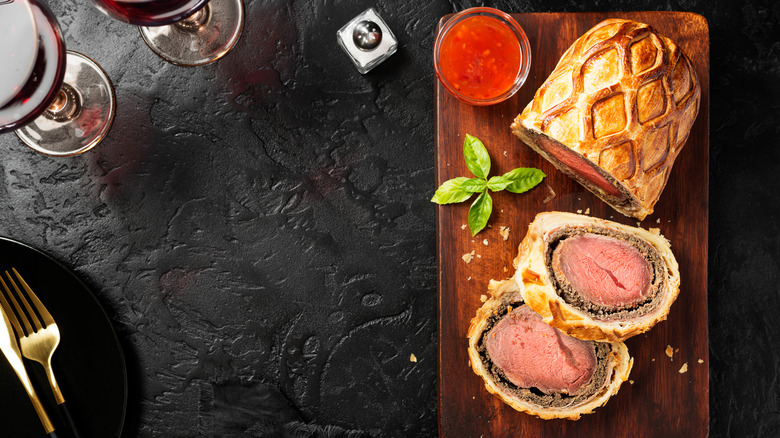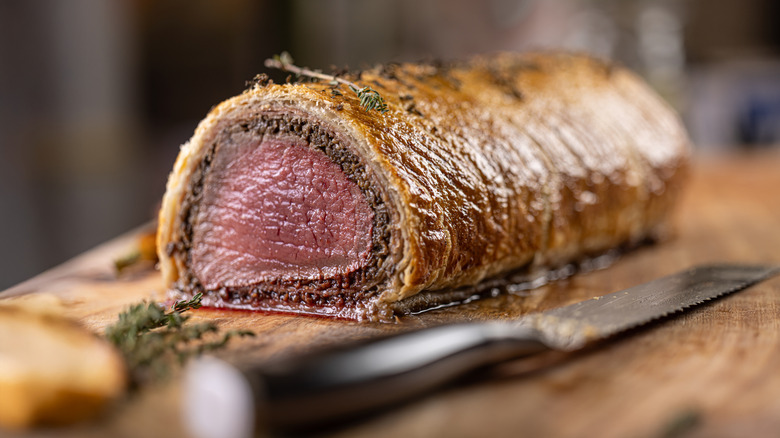Make Budget-Friendly Beef Wellington With This Meat Swap
Beef Wellington is a staple of luxury dining, a textural marvel with rich, perfectly balanced flavors. But with the rise of internet chefs bringing techniques and recipes to you with a click of a button, such dishes no longer belong exclusively to the realm of four-dollar sign restaurants. That's why it's worth knowing the best ways to make this showstopper and how you can do so without breaking the bank.
Tenderloin is the traditional cut of steak to use in a beef Wellington. However, tenderloin is also considered one of the most expensive cuts of steak, so in an effort to find out how to swap it for something more economical, Food Republic spoke to Mike Saperstein, owner and head of culinary operations at Sunshine Provisions, a South Florida go-to for high-quality meats. His answer was to look for eye of round, which is considered one of the best cuts of steak if you're looking for a lean option. However, there are tradeoffs, he warned. "Eye of the round is lean and budget-friendly — but it has a [reputation] for being dry because it lacks intramuscular fat."
In order to regain some of that tenderness that you may lose by opting for eye of round, a little creativity is required. "The trick to making it work in something like a Wellington is controlling temperature with precision and using the duxelles and pastry wrap to trap moisture." Duxelles is a critical component of beef Wellington, a sauteed and minced combination of mushrooms and shallots.
Getting the most out of your eye of round
For a better understanding of the cooking adjustments needed to get the most out of this ingredient swap, Mike Saperstein had some tricks up his sleeve. The first revolves around finding ways to keep the meat as moist and tasty as possible, which starts with adding extra duxelles in order to boost the flavor and get more moisture into the dish. "I also recommend wrapping the roast in prosciutto or even a thin layer of crepe between the duxelles and puff pastry to absorb extra moisture and keep the crust crisp," he said.
"Wrap everything tightly in plastic wrap and chill before baking," he advised. "That helps the log set, making for even cooking and slicing. You're basically engineering a heat barrier around a delicate cut." This is important, as how you cut beef Wellington can help determine how the dish presents. Too thick and you risk putting your diner into a food coma; cut too thin, and it falls apart. Using a razor-sharp knife to slice through in one motion to achieve one-inch-thick pieces will yield optimal results.
Finally, cooking temperature will be critical with this dish. "Cook it no further than medium-rare — ideally, pull it at 120 [degrees Fahrenheit] and let it carryover," Saperstein said. "You get that nice rosy center without the price tag of a tenderloin."


